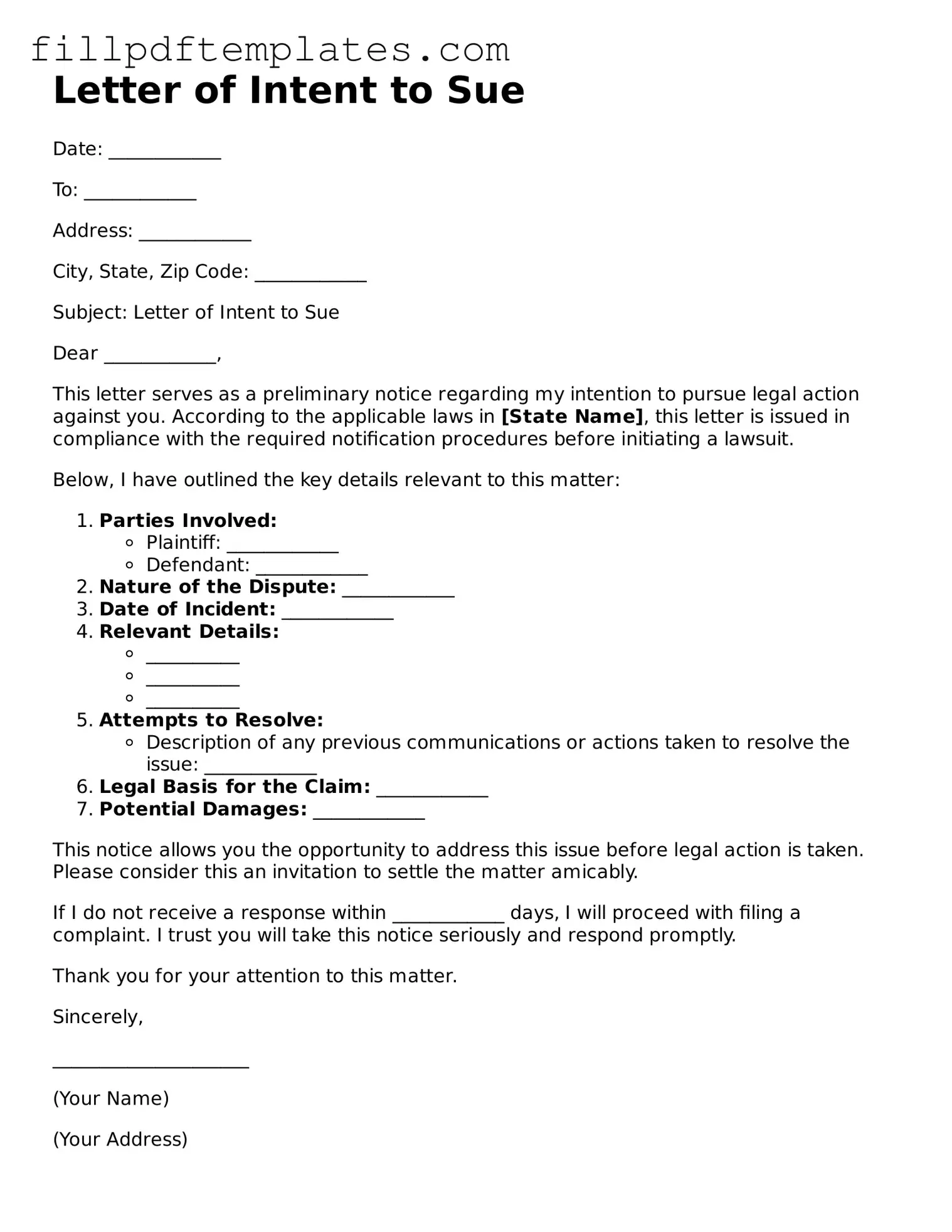Letter of Intent to Sue
Date: ____________
To: ____________
Address: ____________
City, State, Zip Code: ____________
Subject: Letter of Intent to Sue
Dear ____________,
This letter serves as a preliminary notice regarding my intention to pursue legal action against you. According to the applicable laws in [State Name], this letter is issued in compliance with the required notification procedures before initiating a lawsuit.
Below, I have outlined the key details relevant to this matter:
- Parties Involved:
- Plaintiff: ____________
- Defendant: ____________
- Nature of the Dispute: ____________
- Date of Incident: ____________
- Relevant Details:
- __________
- __________
- __________
- Attempts to Resolve:
- Description of any previous communications or actions taken to resolve the issue: ____________
- Legal Basis for the Claim: ____________
- Potential Damages: ____________
This notice allows you the opportunity to address this issue before legal action is taken. Please consider this an invitation to settle the matter amicably.
If I do not receive a response within ____________ days, I will proceed with filing a complaint. I trust you will take this notice seriously and respond promptly.
Thank you for your attention to this matter.
Sincerely,
_____________________
(Your Name)
(Your Address)
(Your City, State, Zip Code)
(Your Phone Number)
(Your Email Address)
